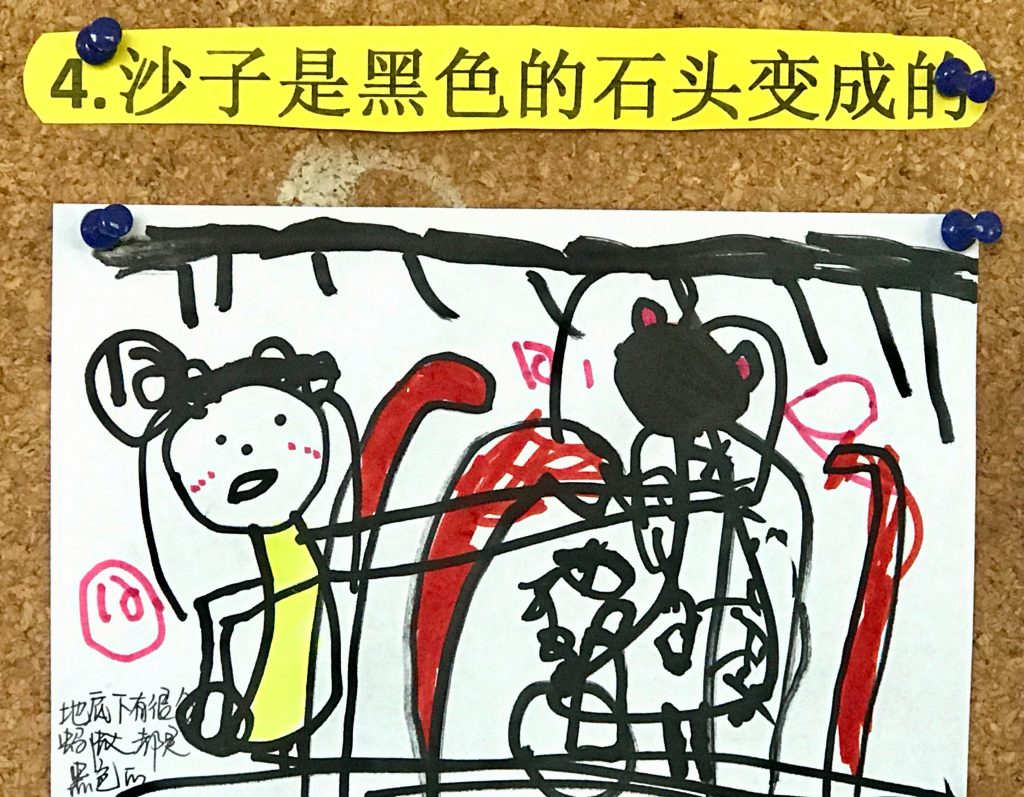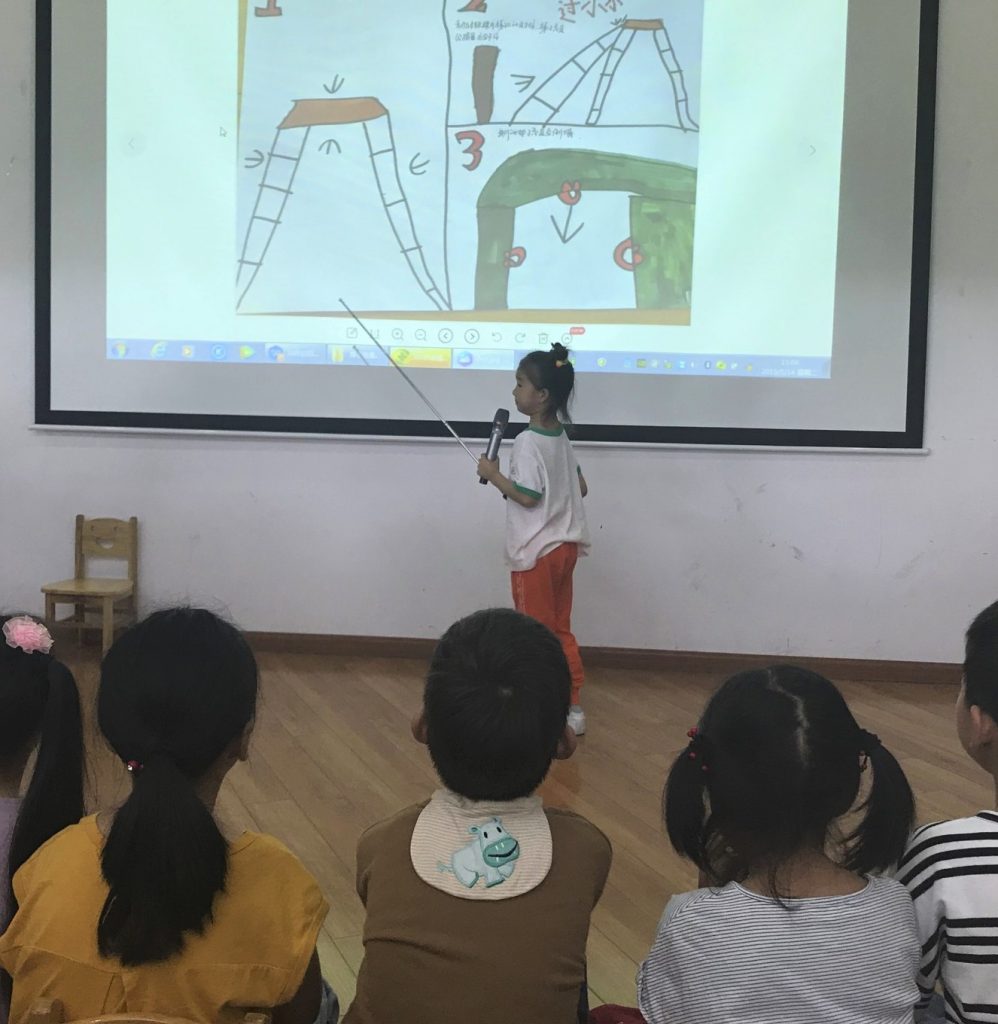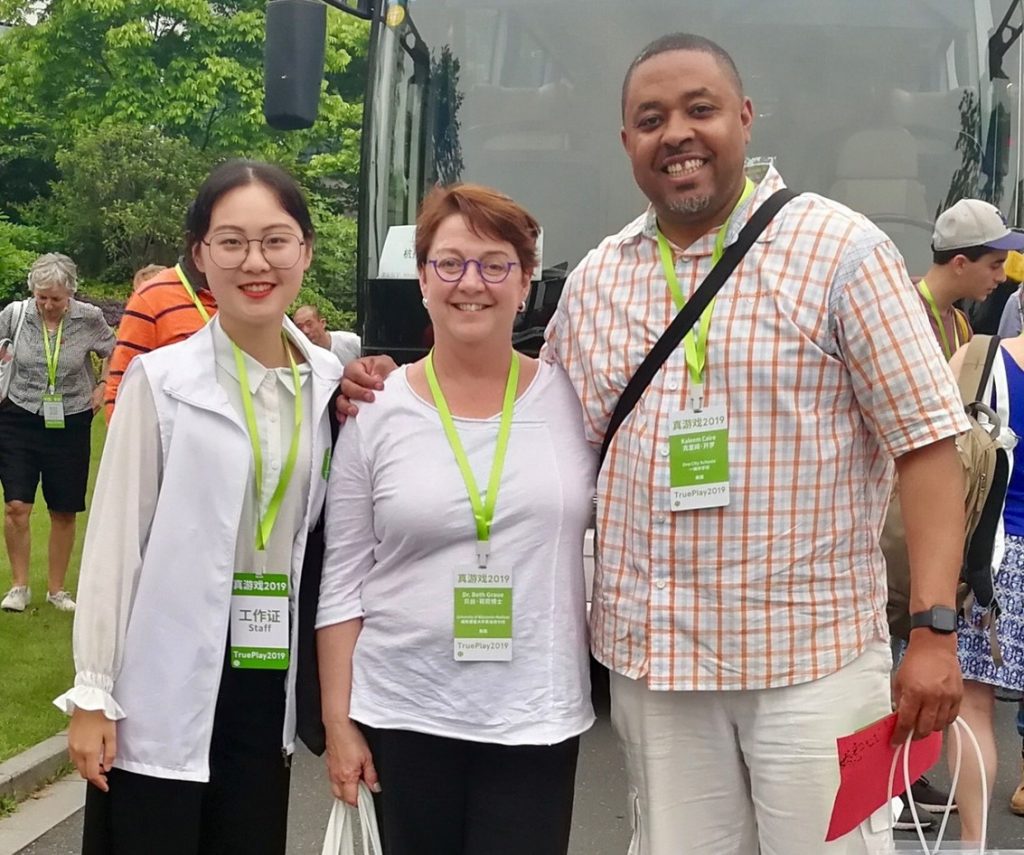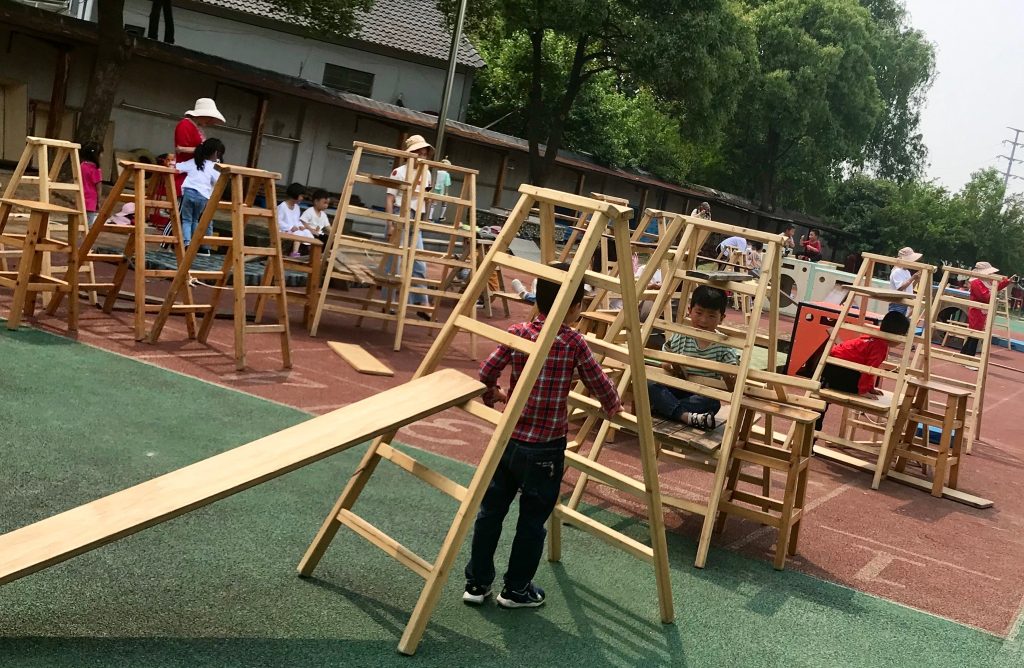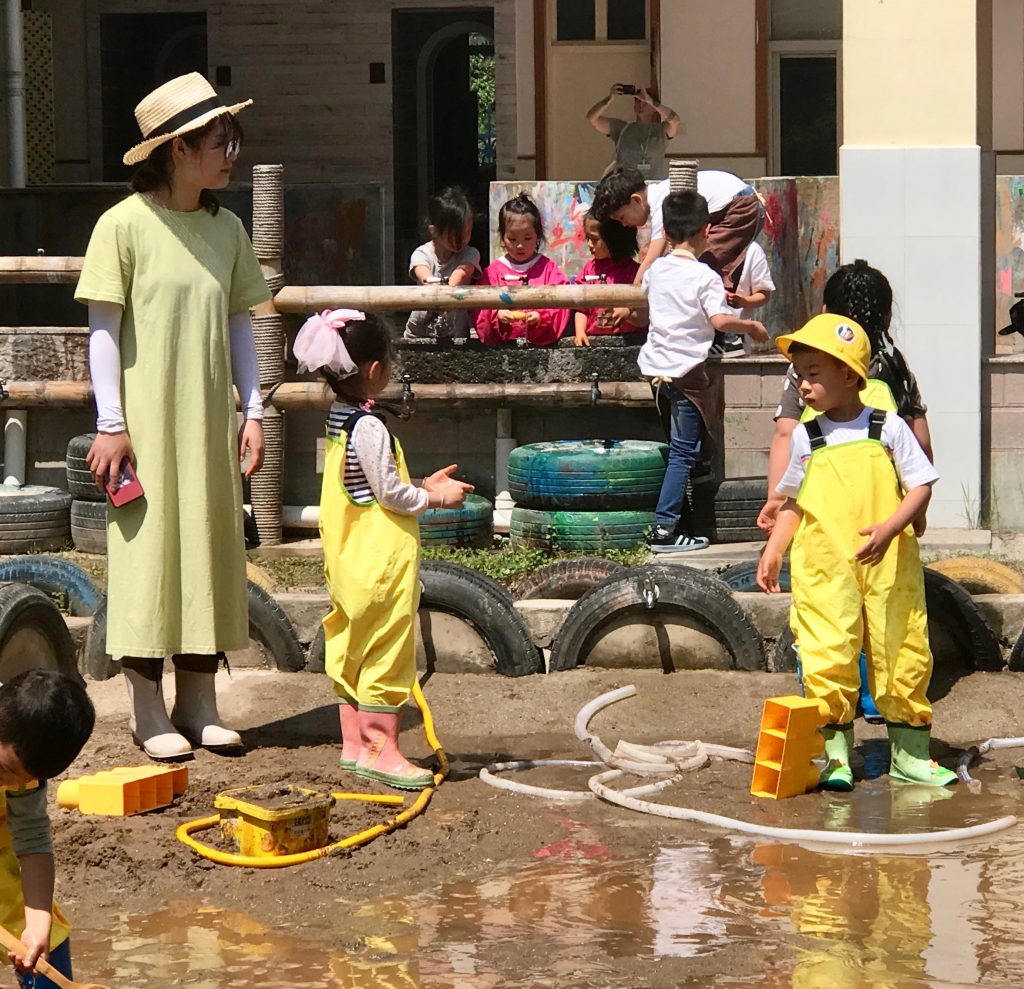Why would a researcher travel half-way around the world to watch kids play?
CRECE Director, Beth Graue, had a very good reason for flying 20 hours to Anji, a county situated in a northwestern province of China. Along with CRECE Advisory Board member and One City Schools’ Director Kaleem Caire, Graue attended the first True Play conference to observe the power of Anji Play — a bold approach to early childhood education that interweaves activities and environmental features based on five principles: Love, Risk, Engagement, Joy, and Reflection.
“It was remarkable to see first-hand the ways that Anji Play equips and allows children to explore their world — through play, said Graue. In Anji Play, children have two hour long play periods – outside when weather permits. Those two hours are brim-full of activity. Children use ladders(!) and build high structures. They take risks climbing and balancing. They engage freely in water play. They use hoses to make streams and deep muddy valleys. Rain suits and boots are on hand to keep them dry. Countless numbers of blocks are available for them to build towers and more. But if you spend time watching, you quickly discover that much more than play is going on. A great deal of learning is happening.”
As the children play, experiment, cooperate, and learn about risk, they are watched by teachers, whose role is to document the children’s learning through photos, videos, and written notes. Very rarely will a teacher interject themselves into the children’s play.
After spending time playing, they return to their classrooms to write play stories that describe their engagement. (See drawing.) Then, teachers gather the children together to reflect on what they’ve learned. Graue observed a classroom full of children reflect with a teacher on a drawing of a ladder the children had positioned to serve as a ramp for rolling a tire down to go into a barrel. Children spent a half-hour hypothesizing about how the ladder’s position affected the way it worked as a ramp. The teacher asked really good questions, based on observations of the children’s play, and then the children took turns respectfully reflecting with their peers. What the children were learning, in fact, was physics.
Graue also observed that teachers allowed children to take risks in play. Allowing children to take risks is important, according to Anji experts. Through risk-taking, children show that they are able to be good decision-makers as they test their balance and limits while building trust among classmates.
Kaleem Caire and teacher Carol Spoehr both presented at the True Play conference, as well as Carissa Christner from the Madison Public Library. The next True Play conference is scheduled to be hosted at UW-Madison in the Summer of 2020.
To keep apprised of CRECE events and the upcoming conference, sign up here. CRECE is looking forward to “playing” a lead role in this world-class event. In the meantime, Madison residents might discover Anji Play happening in their backyard, through the Madison Public Library or One City Schools.
